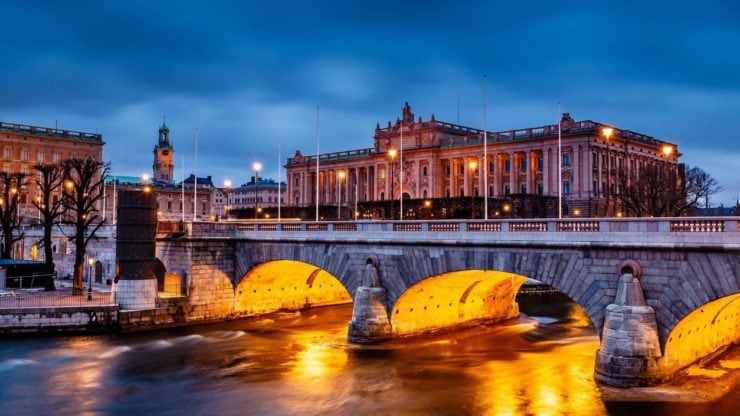Sweden is set to implement a new policy that increases payments for immigrants who voluntarily leave the country, with incentives rising significantly by 2026.
Under the plan, the current payment, capped at 40,000 Swedish kronor, will increase to a maximum of 350,000 kronor.
The policy shift, announced in September 2024, aligns with the government’s goal to reshape its migration framework.
Supported by the anti-immigration Sweden Democrats, the initiative is part of a broader effort to manage immigration levels, reduce social strain, and promote integration.
Boost in payments to drive return migration
Sweden’s current incentive for immigrants who choose to return to their home countries is modest, with 10,000 kronor offered per adult and 5,000 kronor per child, subject to a family cap of 40,000 kronor.
The upcoming changes mark a significant increase, with payments reaching up to 350,000 kronor by 2026.
This adjustment aims to encourage voluntary returns, easing pressure on social services and fostering a sustainable migration system.
The policy is part of a broader shift that includes stricter entry requirements for low-skilled labour.
Other European countries’ return incentives compared
Sweden is not alone in offering financial incentives for voluntary return migration.
Denmark leads with payments of over $15,000 per person, while Norway offers around $1,400, and France provides approximately $2,800. Germany’s incentive stands at about $2,000.
These measures reflect a regional trend where European countries offer financial support to immigrants who choose to return, helping them resettle in their countries of origin.
Along with increasing return payments, Sweden plans to tighten its work permit criteria for low-skilled workers.
By June 2025, immigrants will need to earn at least 80% of the median Swedish salary—35,600 kronor (approximately $3,455)—to qualify for a work permit.
The new law aims to prioritise skilled labour, directing opportunities toward domestic workers for lower-wage jobs. Certain professions, such as domestic care, will remain exempt from this rule to ensure critical services are maintained.
Attracting highly skilled immigrants
Despite the restrictions on low-skilled workers, Sweden is enhancing its appeal for highly skilled immigrants.
A proposal to adopt the EU’s new Blue Card Directive aims to attract top talent by lowering salary thresholds and expanding eligibility criteria. This change is expected to take effect on January 1, 2025.
The government’s strategy is to boost Sweden’s competitiveness by ensuring that employers in advanced sectors can access the skilled workforce they need.
In a shift from previous decades, Sweden is experiencing net emigration for the first time in over 50 years.
Between January and May 2024, 5,700 more people left Sweden than arrived, driven by stricter immigration policies and fewer asylum seekers.
The Swedish Ministry of Justice shared in a social media post that 2024 is set to see the lowest number of asylum-seekers since 1997.
The trend reflects a broader move towards sustainable migration policies, aiming to balance integration efforts and reduce social exclusion.
Indians lead the surge in departures
A notable trend in Sweden’s emigration patterns is the increase in Indian nationals returning to their home country.
In the first half of 2024, 2,837 Indians left Sweden, a 171% rise compared to the same period in 2023.
Despite this, Indians remain one of the largest immigrant groups in Sweden, second only to Ukrainians in terms of arrivals this year.
The number of Indian arrivals has dropped to 2,461 from 3,681 in the same period last year, marking a shift after years of steady growth.
Sweden’s crackdown on immigration sees results
Sweden’s stricter stance on immigration has led to a significant drop in new arrivals and an increase in emigration.
The Swedish Migration Agency projects continued declines in asylum applications and rising emigration in the coming years.
Immigration fell by 15% year-on-year in early 2024, while emigration surged by 60%.
The policy changes follow a shift that began in 2015 when Sweden acknowledged the need for a more controlled approach to migration after years of high intake.
Sweden’s history as a “humanitarian superpower” has seen a transformation.
In 2014, the country received over 81,000 asylum-seekers, and the number nearly doubled in 2015.
The nation has since moved towards more controlled migration, particularly following the rise of the Moderate Party and Sweden Democrats in 2022.
The government’s recent actions represent a significant shift in Sweden’s approach to immigration, prioritising integration and economic sustainability over previous humanitarian ambitions.
The post Sweden is now offering big money to make immigrants leave: here’s how much and why appeared first on Invezz

